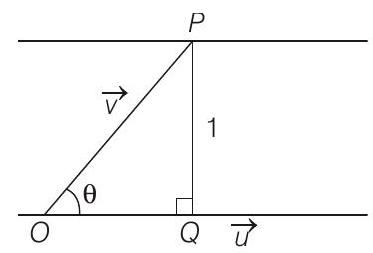Vectors 3 Question 19
19. Let
(a) There is exactly one choice for such
(b) There are infinitely many choices for such
(c) If
(d) If
Show Answer
Answer:
Correct Answer: 19. (b, c)
Solution:
- Let

Clearly, there may be infinite vectors
Again, let
Thus,
Now, if
Now, if






